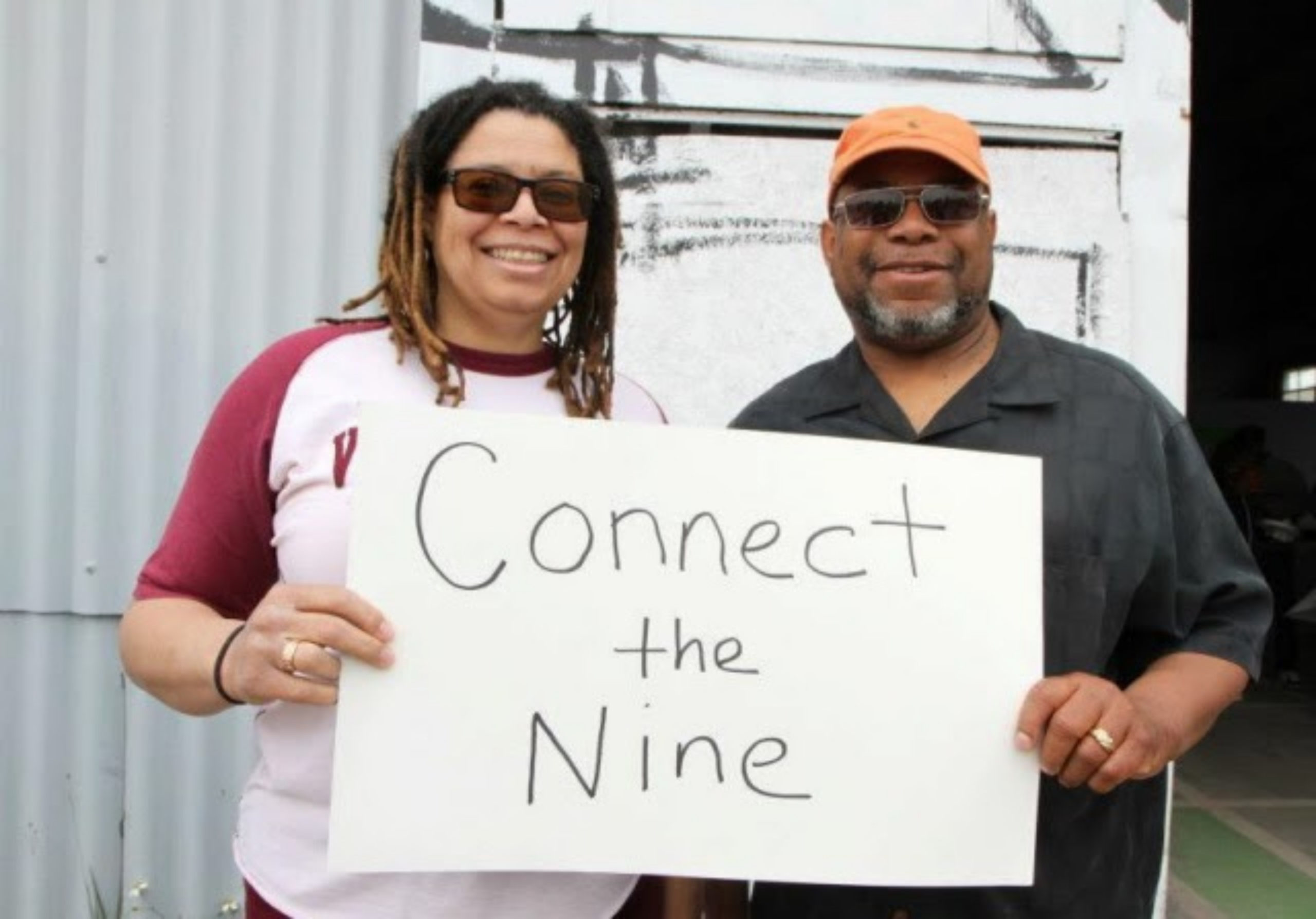Connect the 9
Make the Saint Claude Bridge safe for all travelers

The Problem – The St. Claude Avenue Bridge poses serious safety concerns to non-motorized users, especially bikers and walkers, and is one of the most dangerous connectors in the city. Despite unsafe conditions, it is the sole pedestrian and bike connector, and many residents regularly cross by foot or bike to access services; go to work; buy groceries; or reach health services. Improving the bridge infrastructure would improve access and increase equity for bikers, walkers, and transit riders.
How is the St. Claude Bridge Dangerous for Bikers and Walkers?
Life-threatening infrastructure on the St. Claude Bridge includes:
- Extremely narrow, unsafe road conditions for bicyclists and walkers
- Poor lighting and safety concerns for walkers
- Lack of signage stating bicyclist rights on the bridge
- Speeding vehicles and lack of enforcement of speed limit
- Shared bicycle and freight lane, putting bicyclists in direct conflict with large trucks
The sole bicycle-related fatality in the City of New Orleans in 2011 occurred on the St. Claude Bridge. In 2007-9, the most recent crash data that is publicly available, there were a total of 78 bicycle and pedestrian crashes with motor vehicles along the span of the bridge.
In 2011, 46% of residents living within five-miles of the bridge don’t own cars, compared to 32% city-wide, resulting in a high bicycle, transit, and pedestrian commuter rate.
The St. Claude Bridge is a Critical Connector
Despite the unsafe conditions on the Bridge, many residents of the Lower 9th Ward and outer parishes regularly cross by foot or bike to access services; go to work; buy groceries; or reach health services.
The Bridge is the only reasonable option for walkers and bikers to get across the Industrial Canal to the core of the city, where commerce, jobs, and amenities are concentrated.
The Bridge serves as an economic and inter-regional connector between parishes, as well as connecting the Mississippi River Trail, which connects Louisiana to Minnesota.
How Can We Make the Bridge Safe?
In our neighborhood survey administered to over 120 people, the top safety concerns identified:
Lack of a bike lane
Poor lighting on the bridge
Speeding vehicles
These concerns could be easily improved in the short-term within existing local budgets.
Lane re-striping on the bridge roadway surface – There are currently shared lane markings (sharrows) at the approach of the Bridge; however, these markings are faded and inadequate, and drivers often honk or swerve around bicyclists. We ask that new striping, with additional markings every 250 feet, be implemented.
Improved signage on the bridge – We request that the “Bicyclists May Use Full Lane” sign be added to the bridge and its approaches. The right lane of the bridge is a shared lane that can be fully occupied by cyclists, but bicyclists still report being regularly harassed for riding in the lane.
Pedestrian scale lighting – Installing energy-efficient pedestrian scale lighting along the pedestrian walkway of the bridge would improve safety, limit crime, and increase ridership across the bridge.
Work with local law enforcement to enforce speed limits and laws giving cyclists three feet of space – Enforcing bridge speed limits could help to reduce one of the greatest concerns of cyclists: vehicles, including trucks, exceeding the speed limit on the bridge.
Bridge Retrofit
In the longer-term, in order to create a safe environment for bikers and walkers, the St. Claude Avenue Bridge will need to be retrofitted to better accommodate walkers and bikers:
Bike Lanes on the Bridge Approach – One option for Bridge retrofit includes shrinking the 16ft median to 4ft, allowing for 6ft bike lanes in both directions of travel. When the bridge crosses the canal, bicyclists would re-join the existing pedestrian pathway. This option is relatively inexpensive, and would provide significantly safer passage for bicyclists, giving them a space separate from speeding vehicles.
Separated Bicycle and Pedestrian Walkway – Long-term bridge retrofit entails expanding and improving the pedestrian path across the St. Claude Bridge to most efficiently and safely accommodate bicyclists and pedestrians. The improvement includes:
- Creating a separated pedestrian and bicycle path along the entire bridge approach
- Lengthening and widening path across the span of the canal
- Installing new lighting, and
- Providing ADA-compliant ramp access up both levees
About Connect the Nine
Connect the Nine: St. Claude Bridge Safety & Access Committee formed in the fall of 2011 to advocate for improved bicycle and pedestrian safety on the Bridge, and we are comprised of 9th Ward community members as well as members of local community organizations. We partnered with a group of UNO Planning students in 2012 to study the Bridge and identify life-saving, short- and long-term improvements on the Bridge.
The UNO Transportation Institute’s report identifies case studies, estimates costs, and identifies potential funding sources.
UPCOMING
National Bike Summit 2024 Report Back
Last month, Bike Easy staff and board members attended the National Bike Summit in Washington D.C. March 19-21. The annual summit, organized by the League of American Bicyclists, brings together…

